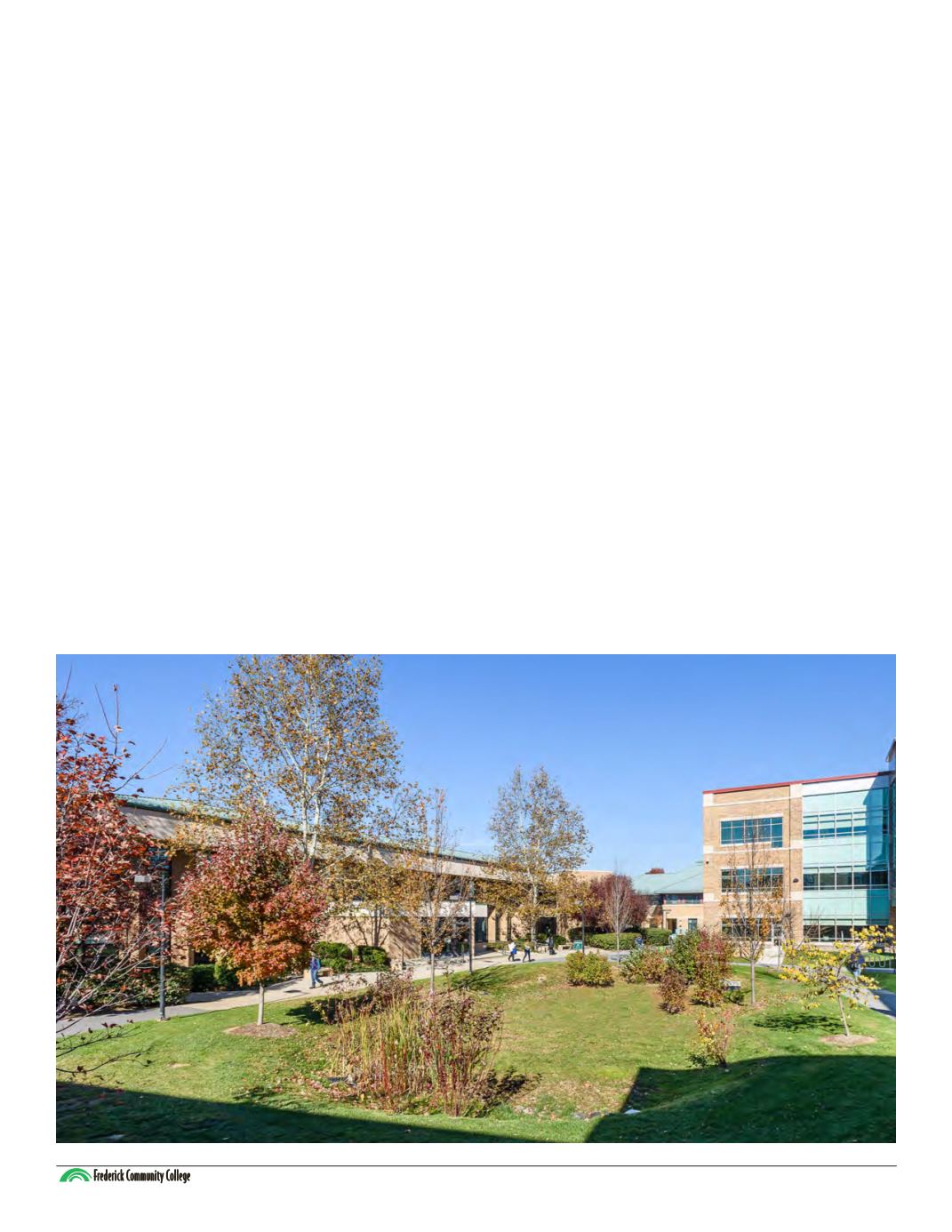

page 39
Utilities/Infrastructure
Domestic Water
The campus is currently served by an eight-inch water line supplied by the City of Frederick.
The line enters the campus from Opossumtown Pike at the main entrance, which is the terminus of the line extending north from the
city. An additional 12-inch line from the city approaches the campus from the west (Fort Detrick) and was connected to the campus in
1999. At that time, the new line was connected in a manner to create a continuous loop around the campus. The addition of this high
pressure water line has eliminated water pressure problems on campus and should serve the College for the foreseeable future.
Hot and ChilledWater
Heating and air conditioning water is delivered via underground insulated piping supplied from the Central Plant located on the north
wing of the Athletics Center. Capacity exists for planned short term future development. The Plant is served by two 450-ton heat-
reclaim centrifugal electric chillers. Heat is supplied by three boilers - two 180 ton gas/oil fired low-pressure boilers with computer-
controlled high efficiency burners and a smaller 2.8 million BTU gas fired boiler also under computer management.
Electric Power Distribution
Electric power is supplied by the Allegany Power Company’s local division, formerly Potomac Electric Power Company. In 1988, the
College upgraded the entire system with modern, above-ground transformers. The system is now owned by Allegany Power. Individual
buildings on the campus are metered.
Sewer and StormWater Utilities
A storm water management facility was constructed in 1994 and major upgrades were carried out to both the sewer lines and
underground storm water lines and structures on campus. At that time, the underground utility expansion plan was developed. The
recently implemented storm water management code, among other requirements calls for several smaller retention areas as opposed
to a single large pond.
















